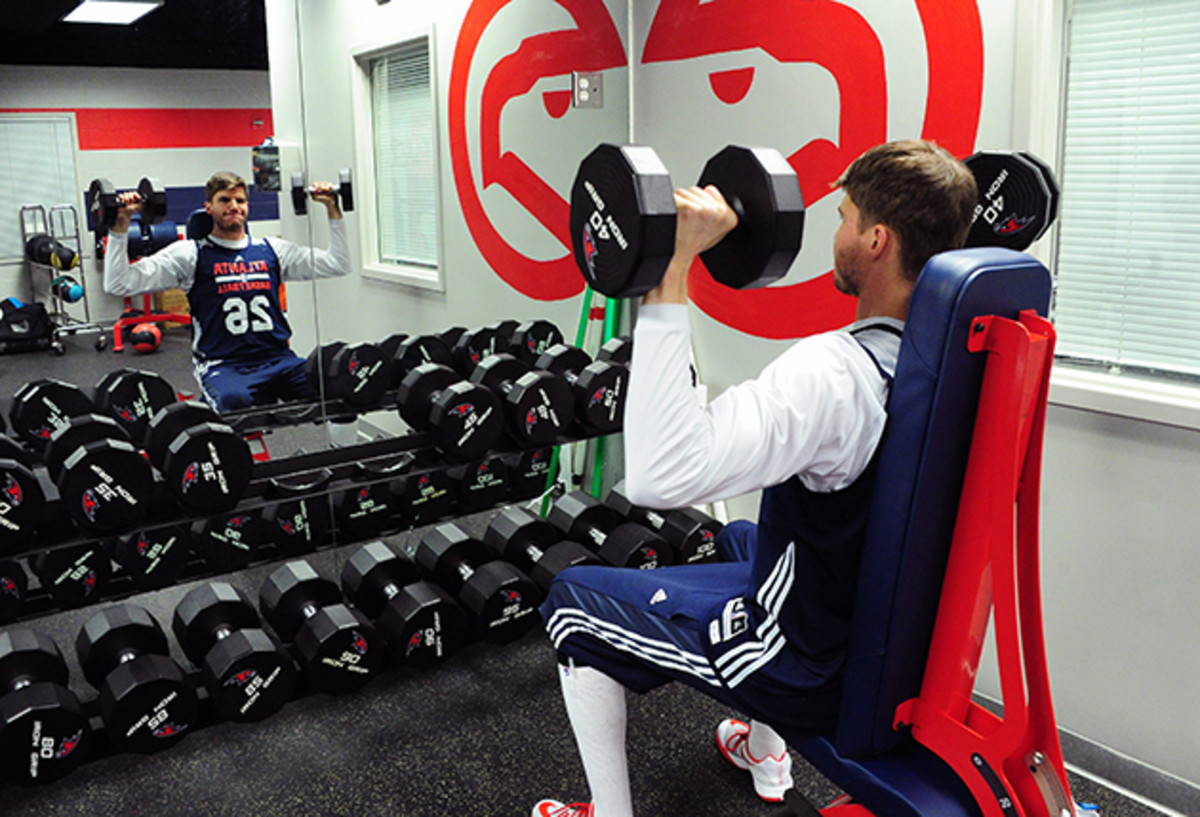Vitamins for Victory: How the Atlanta Hawks prevent common NBA injuries

At the core of the Atlanta Hawks' philosophy is a simple substance: vitamins. Though those are typically found in pill form, the team doesn't limit its players to the digestible variety.
"Before the basketball vitamin—the individual skills sessions—we have the body vitamin," says Hawks director of rehabilitation Mike Roncarati. "It doesn't matter if you're injured or not. Each player gets 10 to 20 minutes of rehab treatment to work on things that may have been forgone in training."
Coach Mike Budenholzer’s emphasis on the body’s daily nourishment has translated into every aspect of the team’s preparation, from practicing fundamental skills such as shooting mechanics or footwork on pick-and-rolls to post-workout treatment and rehab.
Putting a Giant back together: How Jason Pierre-Paul got back to football
and the Hawks team describe them, help prevent injuries, increase range of motion and combat fatigue.
"Because of how long their torsos are, most basketball players have stiff backs, hips and ankles," says Roncarati (PT, CSCS), who was the strength-and-conditioning coach for the NBA champion Warriors last season. "We do a lot of exercises kneeling and on hands and knees, and we try to teach [players] how to properly drop and absorb force when landing from a jump, to prevent ankle injuries."
Roncarati says many players stand on the outside of the foot, making the ankle more prone to rolling inward. (Most sprains are actually due to foot inversions, even though it looks as if the ankle is turning outward.) When a player can use the inner part of the foot and integrate the same-side hip and opposite-side core muscles while standing, he is less likely to get a sprain during game action, especially when fatigued.

can also create special insoles that can change a player's foot position so he does not land on the outside of it and become more vulnerable to injury.
“These guys are predisposed to cumulative fatigue and getting hurt and just not feeling great because of the schedule and all of the travel,” says Roncarati,
Roncarati, who also works closely with the Hawks’ training staff and director of player performance Keke Lyles, is also responsible for helping injured players return to the court as quickly as possible. But the players’ daily assessments help him pinpoint where the body is losing range of motion—a telltale sign that tendons are tight, muscles are stiff and the body is stressed.
"Fitness, power and strength is not what these players lack, it’s often the other side of the puzzle,” says Roncarati, who earlier this season helped All-Star point guard Jeff Teague return in just one week from a sprained ankle. "We just have to find out where they are most deficient, and when we see a joint where they can't move, that's where I go first. My job is to be proactive. We want to help them from a regenerative, restorative standpoint."
